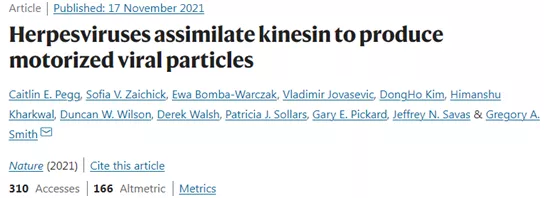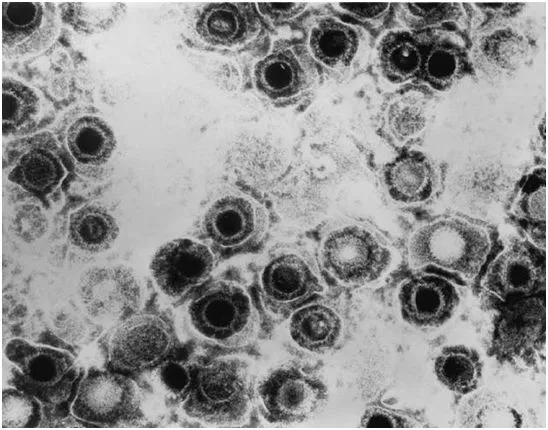First time to reveal the mechanism of herpes virus invading the nervous system
- Normal Liver Cells Found to Promote Cancer Metastasis to the Liver
- Nearly 80% Complete Remission: Breakthrough in ADC Anti-Tumor Treatment
- Vaccination Against Common Diseases May Prevent Dementia!
- New Alzheimer’s Disease (AD) Diagnosis and Staging Criteria
- Breakthrough in Alzheimer’s Disease: New Nasal Spray Halts Cognitive Decline by Targeting Toxic Protein
- Can the Tap Water at the Paris Olympics be Drunk Directly?
First time to reveal the mechanism of herpes virus invading the nervous system
- Should China be held legally responsible for the US’s $18 trillion COVID losses?
- CT Radiation Exposure Linked to Blood Cancer in Children and Adolescents
- FDA has mandated a top-level black box warning for all marketed CAR-T therapies
- Can people with high blood pressure eat peanuts?
- What is the difference between dopamine and dobutamine?
- How long can the patient live after heart stent surgery?
Nature: First time to reveal the mechanism of herpes virus invading the nervous system.
More than half of American adults are carriers of HSV1 (herpes simplex virus type 1), which is dormant in the peripheral nervous system and can never be eradicated.
Some HSV1 carriers will never even experience so many cold sores from HSV1. But for some other HSV1 carriers, it can cause blindness or life-threatening encephalitis.
More and more evidence shows that it contributes to the occurrence of dementia.
As a close relative of HSV1, HSV2 is more commonly transmitted through sexual contact, and can be passed from mother to newborn as a newborn herpes during childbirth.
The manifestation of neonatal herpes is lesions on the whole body of the baby. Most babies can recover, but in the worst case, it can cause brain damage or spread in all organs and cause death.
In a new study, researchers from Northwestern University’s Fernberg School of Medicine revealed the cunning strategy of HSV1 to infect the nervous system, which opened a long-needed vaccine development path for HSV1 and HSV2.
The relevant research results were published online in Nature on November 17, 2021. The title of the paper is “Herpesviruses assimilate kinesin to produce motorized viral particles”.

Corresponding author of the paper and professor of microbiology and immunology at Northwestern University’s Fernberg School of Medicine , Greg Smith, said, “We urgently need a vaccine to prevent the herpes virus from invading the nervous system.”
This new research has discovered a route to vaccine development. It discovered how the herpes virus hijacks a protein from epithelial cells and turns it into a “traitor” to help the virus enter the peripheral nervous system. They call this process “assimilation.” Smith said the discovery could have a wide range of effects on many viruses, including HIV and SARS-CoV-2.
Hitchhiking
Smith said, “The herpes virus needs to inject its genetic code into the nucleus so that it can start making more herpes viruses. It reprograms the host cell to make it a virus factory.
The biggest problem is how it gets in. In the nucleus of the neuron?”
Like many viruses, the herpes virus jumps on train tracks called microtubules in cells and uses protein engines called dynein and kinesin to move along the tracks.
Smith and his research team discovered that the herpes virus uses the kinesin engine it brings from other cells to transport it to the nucleus of neurons. Kinesin becomes a traitor and serves the herpes virus.
 Herpes simplex virus (HSV), the picture comes from CDC.
Herpes simplex virus (HSV), the picture comes from CDC.
Smith said, “By understanding how the herpes virus achieves this incredible feat to enter our nervous system, we can now consider how to remove this ability.
If you can prevent it from assimilating kinesin, you will let herpes Viruses cannot infect the nervous system. You have candidates for the development of preventive vaccines.”
Herpes virus travels “international”
Think of the host cell as a railway platform. All tracks lead to a hub called the central body. There are two types of train engines: dynein and kinesin. One type of train engine travels toward the center, such as the city center, and the other travels away from the center to the suburbs.
When a more typical virus, such as the influenza virus, infects mucosal epithelial cells (cells that line your nose and mouth), it grabs these two engines and moves back and forth on the microtubule bundle until it finally or more Or less accidentally reach the nucleus. In general, it is a short commute from the suburbs to the nucleus via the centrosome.
But traveling along the nerves is equivalent to a cross-country trip. The herpes virus jumped on the dynein engine during this trip, but it also ensured that the kinesin engine would not take it back.
Smith said, “This is a long way. It may take eight hours to get from the end of the neuron to the centrosome.” But the dynein engine cannot take it farther than the centrosome.
The herpes virus needs to reach the nucleus. At this time, it reached into its “pocket”, took out the kinesin engine it hijacked from the mucosal epithelial cells, and convinced the kinesin to become part of its team. In an act of betrayal, the kinesin assimilated by the herpes virus transported it directly to the nucleus.
Caitlin Pegg, co-first author of the paper and a graduate student in Smith’s laboratory, said, “This is the first time that the herpes virus has been discovered to re-use a cellular protein and use it to drive subsequent rounds of infection. We are very happy to further discover that these viruses have evolved.
The molecular mechanisms that make them arguably the most successful pathogens known to the scientific community.”
Reference:
Caitlin E. Pegg et al. Herpesviruses assimilate kinesin to produce motorized viral particles . Nature, 2021, doi:10.1038/s41586-021-04106-w.
First time to reveal the mechanism of herpes virus invading the nervous system
(source:internet, reference only)
Disclaimer of medicaltrend.org
Important Note: The information provided is for informational purposes only and should not be considered as medical advice.



